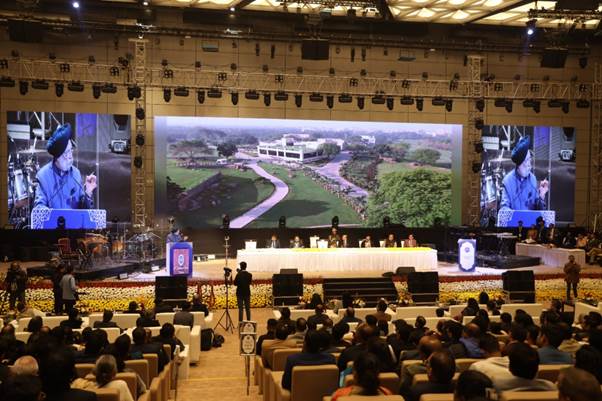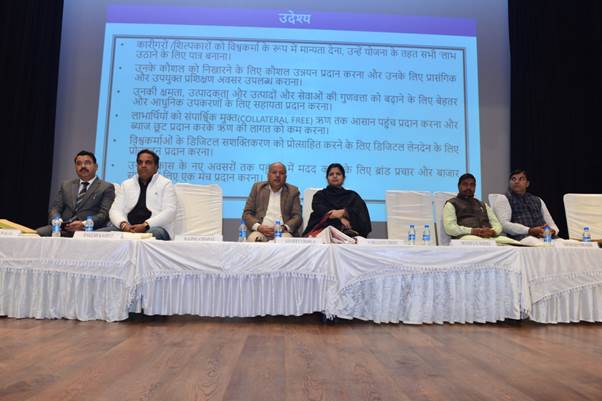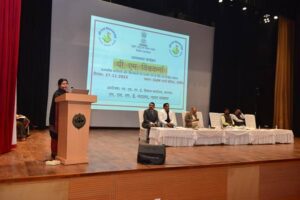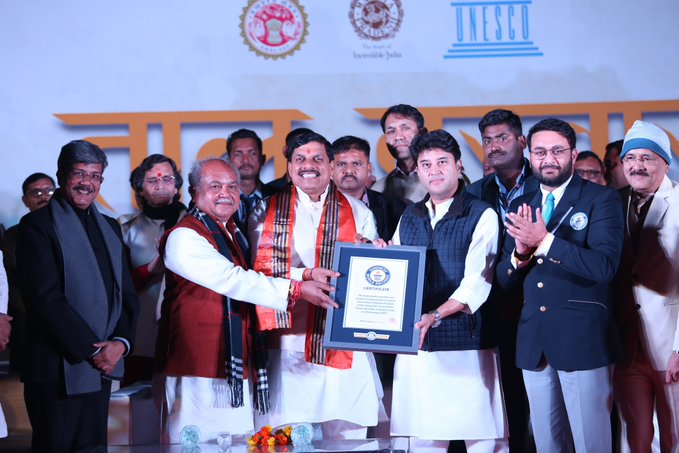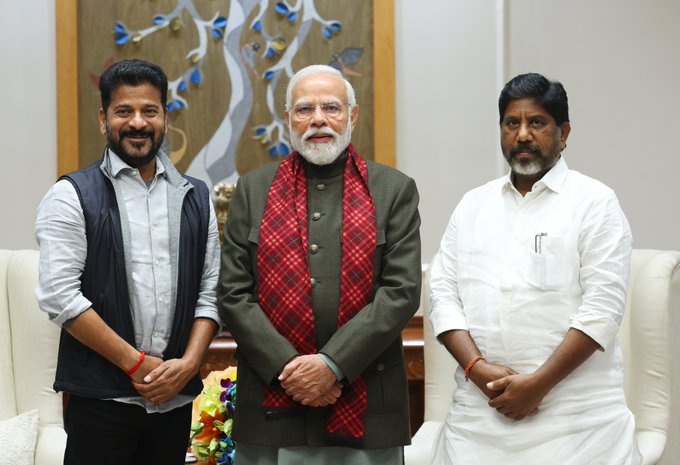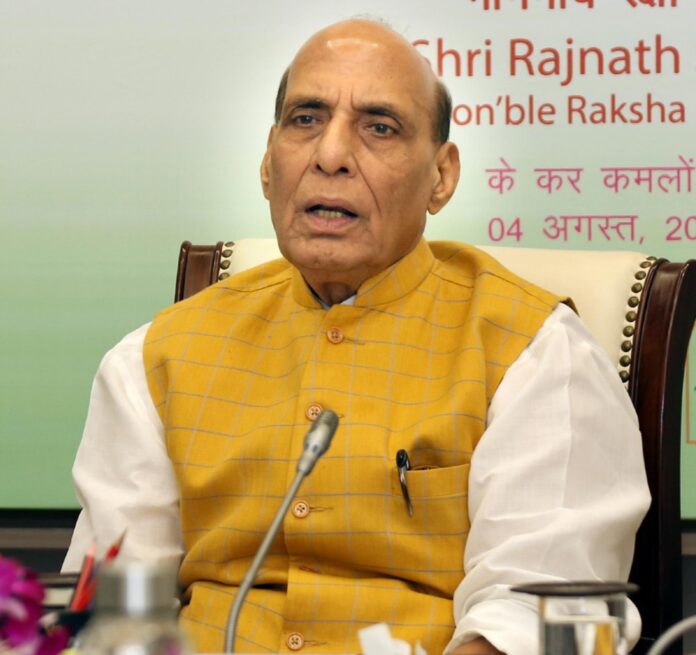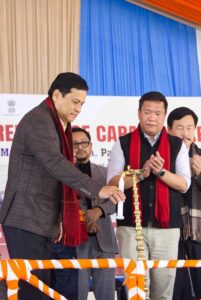The Ultimate Guide to Understanding VOIP Numbers: Features, Uses, Security, Cost, and India’s Adoption
Voice over Internet Protocol (VOIP) technology is rapidly changing how we communicate. One of the most significant benefits of this technology is the ability to make and receive calls using a VOIP number. These numbers are becoming increasingly popular, particularly for businesses, as they offer a range of features and benefits. However, with so many options available, understanding VOIP numbers can be daunting. In this comprehensive guide, we’ll cover everything you need to know about VOIP numbers, including their features, uses, security, cost, and adoption in India. By the end of this post, you’ll have a better understanding of how VOIP numbers work and how they can benefit you or your business.



1. Introduction to VOIP numbers: What are they and how do they work?
In today’s rapidly evolving technological landscape, Voice over Internet Protocol (VOIP) numbers have emerged as a game-changer in the realm of communication. But what exactly are VOIP numbers and how do they work?
VOIP numbers, also known as virtual phone numbers, are telephone numbers that are not tied to a specific physical location or phone line. Instead, they are connected through the internet, allowing users to make and receive calls using their internet connection.
The underlying principle behind VOIP technology involves converting analog audio signals into digital data packets that can be transmitted over the internet. This transformation is facilitated by specialized software and hardware, making it possible to transmit voice signals over IP networks.
One of the key advantages of using VOIP numbers is their flexibility and scalability. Unlike traditional phone numbers associated with fixed physical lines, VOIP numbers can be easily configured to redirect calls to different devices or locations. This makes them an ideal choice for businesses with remote teams, as calls can be seamlessly forwarded to employees working from various locations.
Furthermore, VOIP numbers come with a plethora of features that enhance communication capabilities. These include call forwarding, voicemail-to-email transcription, call recording, conference calling, and more. These features empower businesses to streamline their operations, improve customer service, and boost productivity.
In terms of security, VOIP numbers adhere to stringent protocols to ensure the confidentiality and integrity of calls. Encryption techniques are employed to protect sensitive information from unauthorized access or interception. However, it is crucial for businesses to implement additional security measures, such as using strong passwords and regularly updating their VOIP systems, to mitigate potential risks.
When it comes to cost, VOIP numbers are known for their affordability compared to traditional phone systems. They eliminate the need for expensive hardware installations and maintenance, as all communication is carried out over the internet. This cost-effectiveness, combined with the ability to make international calls at reduced rates, makes VOIP numbers an attractive option for businesses looking to optimize their communication expenses.
In India, the adoption of VOIP numbers has been steadily growing, driven by factors such as increasing internet penetration, technological advancements, and the need for cost-efficient communication solutions. Businesses across various sectors are embracing VOIP technology to streamline their operations, improve customer interactions, and expand their reach.
As we delve deeper into this comprehensive guide, we will explore the various features, uses, security considerations, and the cost-effectiveness of VOIP numbers. Additionally, we will delve into India’s adoption of this transformative communication technology, shedding light on the trends and challenges that businesses in the country may encounter.
So, strap in and get ready to unravel the world of VOIP numbers, as we embark on this enlightening journey together.
2. Features and benefits of VOIP numbers
VOIP (Voice over Internet Protocol) numbers have become increasingly popular in recent years due to their numerous features and benefits. These virtual phone numbers allow users to make and receive calls over the internet, eliminating the need for traditional phone lines. In this section, we will explore some of the key features and benefits of VOIP numbers.
One of the primary advantages of VOIP numbers is their flexibility. Unlike traditional phone numbers tied to a physical location, VOIP numbers are virtual and can be easily configured to forward calls to any device or location. This means that you can answer calls on your mobile phone, computer, or any other internet-connected device, making it ideal for individuals or businesses with remote or distributed teams.
Another notable feature of VOIP numbers is their ability to offer advanced call management options. With features like call routing, auto-attendants, call forwarding, and voicemail-to-email transcription, users have greater control over how calls are handled. This allows for improved customer service, efficient call handling, and better overall communication management.
VOIP numbers also offer cost savings compared to traditional phone services. Since calls are transmitted over the internet, long-distance and international calls can be significantly cheaper or even included in a bundled plan. This makes VOIP numbers an attractive choice for businesses with global reach or individuals who frequently communicate with international contacts.
Furthermore, VOIP numbers often come with a range of additional features that enhance productivity and collaboration. These may include conference calling, call recording, call analytics, and integration with other business tools like customer relationship management (CRM) systems. By leveraging these features, businesses can streamline their communication processes and enhance team collaboration.
Security is a crucial concern when it comes to any communication system, and VOIP numbers are no exception. However, with proper security measures in place, such as encryption and secure network protocols, VOIP communication can be just as secure as traditional phone lines. It is important to work with a reputable VOIP provider that prioritizes data protection and offers robust security features to safeguard sensitive information.
In India, the adoption of VOIP numbers has been steadily increasing, driven by factors such as cost savings, scalability, and improved communication capabilities. Businesses, both small and large, are embracing VOIP technology to enhance their customer service, increase operational efficiency, and expand their reach.
In conclusion, VOIP numbers offer a range of features and benefits that make them an attractive alternative to traditional phone lines. Their flexibility, advanced call management options, cost savings, productivity enhancements, and security measures make them a valuable asset for businesses and individuals alike. With India’s growing adoption of VOIP technology, it is clear that these virtual phone numbers have a bright future ahead.
3. Common uses of VOIP numbers in business and personal communication
VOIP numbers, also known as Voice over Internet Protocol numbers, have become increasingly popular in both business and personal communication. With the advancements in technology, these numbers offer a range of features and benefits that make them a valuable tool for various purposes.
In business communication, VOIP numbers are widely used for customer service and support. They enable businesses to establish a professional and reliable communication channel with their customers, regardless of their geographical location. By having a VOIP number, businesses can easily manage incoming and outgoing calls, forward calls to different departments or employees, and even set up automated voice menus for efficient call routing.
Moreover, VOIP numbers are a cost-effective solution for businesses with international operations or remote teams. They eliminate the need for expensive long-distance calls and provide seamless communication across different locations. This makes it easier for employees to collaborate, share information, and stay connected, regardless of their physical distance.
In addition to business use, VOIP numbers have also gained popularity in personal communication. Many individuals use VOIP numbers for personal calls, especially when they need to make international calls or want to keep their personal number private. VOIP numbers offer competitive calling rates, allowing individuals to save on their phone bills while staying connected with friends, family, or business associates worldwide.
Furthermore, VOIP numbers can be integrated with various devices and platforms, such as smartphones, tablets, or computers, providing unparalleled flexibility and convenience. Users can make calls, send messages, and access voicemail from any device with an internet connection, allowing them to stay connected on the go.
It’s worth noting that the security of VOIP numbers has significantly improved over the years. Encryption protocols and secure network configurations help protect conversations and sensitive information from unauthorized access. However, it’s essential to choose a reliable service provider and implement proper security measures to ensure the privacy and integrity of your communication.
As for the cost of VOIP numbers, they are generally more affordable compared to traditional phone services. Many providers offer flexible pricing plans, allowing businesses and individuals to choose the features and minutes that suit their needs. This scalability makes VOIP numbers a cost-efficient solution for businesses of all sizes and individuals with varying communication requirements.
In India, the adoption of VOIP numbers has been steadily increasing. With its vast population and growing digital infrastructure, more businesses and individuals are recognizing the benefits of using VOIP for their communication needs. The cost-effectiveness, ease of use, and flexibility offered by VOIP numbers make them an attractive option in a country where communication is key for economic growth and connectivity.
Whether it’s for business or personal use, VOIP numbers have revolutionized the way we communicate. From seamless remote collaboration to affordable international calls, these numbers offer a wide range of features and benefits that cater to the evolving needs of modern communication. By understanding the common uses and advantages of VOIP numbers, businesses and individuals can harness their power to enhance communication efficiency, cost-effectiveness, and connectivity in an increasingly interconnected world.
4. Security considerations for VOIP numbers: How to protect your data and privacy
When it comes to using VOIP numbers, it’s crucial to prioritize security and protect your data and privacy. While VOIP offers numerous benefits, such as cost savings and flexibility, it also poses potential risks if not properly secured.
One of the key security considerations is to choose a reliable VOIP provider that implements robust security measures. Look for providers that offer encryption protocols, firewall protection, and regular security updates to ensure your calls and data remain secure.
Another important aspect is to implement strong passwords for your VOIP accounts and regularly update them. Avoid using common or easily guessable passwords and consider using two-factor authentication for an extra layer of security.
It’s also essential to keep your VOIP software and devices up to date with the latest security patches and updates. This helps to address any vulnerabilities and ensures that you are protected against potential threats.
Protecting your network is equally important. Implementing a strong firewall and regularly monitoring your network for any unusual activities can help prevent unauthorized access to your VOIP system.
Additionally, consider using a virtual private network (VPN) when making VOIP calls, especially if you are using public Wi-Fi networks. A VPN encrypts your internet connection, providing an added layer of security and privacy.
Lastly, educate your employees about best practices for using VOIP systems securely. Train them on how to recognize and avoid common phishing attacks and suspicious links or attachments in emails or messages.
By following these security considerations, you can enjoy the advantages of VOIP numbers while keeping your data and privacy protected. Remember, investing in security measures is a proactive approach that ensures a safe and reliable VOIP experience.
5. Cost comparison: VOIP numbers vs. traditional phone systems
When considering implementing a phone system for your business, cost is always an important factor to consider. Traditional phone systems often come with high upfront costs for hardware, installation, and ongoing maintenance. Additionally, you may need to pay for long-distance and international calling rates, which can quickly add up.
On the other hand, VOIP numbers offer a more cost-effective solution. With VOIP, you can make calls over the internet, eliminating the need for costly hardware and infrastructure. Most VOIP providers offer flexible pricing plans that can be tailored to your business needs. Whether you have a small startup or a large enterprise, you can find a VOIP plan that fits your budget.
One of the key advantages of VOIP numbers is their ability to handle long-distance and international calls at significantly lower rates. Whether you’re making calls within your country or reaching out to clients and partners abroad, VOIP can save you a substantial amount on your phone bills.
Moreover, VOIP numbers often include additional features at no extra cost. These features, such as call forwarding, voicemail transcription, and auto-attendants, can enhance your business communication capabilities without increasing your expenses.
It’s also worth mentioning that the cost of maintaining and scaling a traditional phone system can be much higher compared to VOIP. With traditional systems, adding new lines or expanding your infrastructure can be a complex and costly process. In contrast, scaling a VOIP system is usually as simple as adding a few more lines or upgrading your subscription plan.
In India, the adoption of VOIP numbers has been steadily increasing due to their cost-effectiveness. Businesses across various industries are leveraging VOIP to streamline their communication processes and reduce expenses. Whether it’s a small startup or a large corporation, VOIP provides a scalable and affordable solution for businesses of all sizes.
When comparing the cost of VOIP numbers to traditional phone systems, it becomes evident that VOIP offers significant advantages in terms of affordability, flexibility, and additional features. By adopting VOIP, businesses can achieve cost savings while enjoying enhanced communication capabilities, making it a popular choice in today’s digital landscape.
6. India’s adoption of VOIP numbers: Trends, challenges, and opportunities
India’s adoption of VOIP numbers has been an intriguing subject, as the country has witnessed significant growth and development in the telecommunications sector in recent years. VOIP, or Voice over Internet Protocol, has emerged as a game-changer in the way businesses and individuals communicate.
In India, the adoption of VOIP numbers has been steadily increasing, driven by several factors. One of the key drivers is the cost-effectiveness of VOIP services compared to traditional telephony. With VOIP, businesses can significantly reduce their communication costs, especially for international calls, by leveraging the power of the internet.
Another factor contributing to the increased adoption of VOIP numbers in India is the widespread availability of high-speed internet connectivity. As internet penetration continues to expand across the country, more businesses and individuals have access to reliable internet connections, making it easier to utilize VOIP services.
However, despite the numerous opportunities that VOIP presents, there are also challenges that need to be addressed. One such challenge is the regulatory framework governing VOIP services in India. The Telecom Regulatory Authority of India (TRAI) has implemented certain regulations to ensure the security and quality of VOIP services, which businesses and service providers must comply with.
Additionally, there are technical challenges that need to be overcome, such as ensuring seamless connectivity, call quality, and network reliability. These challenges require continuous investment in infrastructure development and technological advancements.
Despite these challenges, the adoption of VOIP numbers in India offers immense opportunities for businesses. It enables them to establish a local presence in different regions of the country without the need for physical offices, thereby expanding their reach and customer base. Moreover, VOIP services empower businesses to provide efficient customer support and engage in real-time communication with their clients, enhancing overall customer satisfaction.
In conclusion, India’s adoption of VOIP numbers is on the rise, fueled by cost-effectiveness, improved internet connectivity, and the need for efficient communication solutions. While challenges exist, the opportunities for businesses are vast. By understanding the trends, addressing the challenges, and leveraging the benefits of VOIP, businesses in India can unlock new possibilities and revolutionize their communication strategies.
7. How to set up a VOIP number: Step-by-step guide
Setting up a VOIP (Voice over Internet Protocol) number can seem like a complex task, but with the right guidance, it can be a straightforward process. In this step-by-step guide, we will walk you through the process of setting up your own VOIP number.
Step 1: Choose a VOIP Service Provider
The first step in setting up a VOIP number is to select a reliable and reputable VOIP service provider. There are many providers available in the market, so it’s important to do your research and choose one that offers the features and pricing that align with your needs.
Step 2: Sign up for an Account
Once you have selected a VOIP service provider, visit their website and sign up for an account. You will typically be required to provide basic information such as your name, email address, and billing details. Some providers may also offer a free trial period, allowing you to test their services before committing.
Step 3: Choose a Phone Number
After signing up, you will be prompted to choose a phone number for your VOIP service. Depending on the provider, you may have the option to select a local number or a toll-free number. Consider your target audience and business needs when making this decision.
Step 4: Set up Hardware or Software
Next, you will need to set up the hardware or software required to make and receive calls using your VOIP number. This may involve connecting a VOIP adapter to your existing phone system or installing a VOIP app on your smartphone or computer. Follow the instructions provided by your service provider to complete this step.
Step 5: Configure Call Settings
Once you have set up the necessary hardware or software, you can configure the call settings for your VOIP number. This includes options such as call forwarding, voicemail, call recording, and call routing. Take the time to customize these settings to suit your business requirements.
Step 6: Test Your VOIP Number
Before fully implementing your VOIP number, it’s essential to conduct thorough testing to ensure everything is functioning correctly. Make test calls both internally and externally to ensure call quality and reliability. This will allow you to identify and resolve any potential issues before going live.
Step 7: Start Using Your VOIP Number
Once you have completed all the previous steps and are satisfied with the performance of your VOIP number, you can start using it for your business communication needs. Update your business cards, website, and other marketing materials with your new VOIP number to ensure consistent branding.
By following this step-by-step guide, you can successfully set up your own VOIP number and enjoy the benefits of enhanced communication capabilities for your business. Remember to regularly assess your needs and adapt your VOIP setup accordingly to maximize its efficiency and effectiveness.
8. Best practices for managing VOIP numbers effectively
Managing VOIP numbers effectively is crucial for ensuring smooth communication and optimizing the benefits of this technology. Here are some best practices to help you effectively manage your VOIP numbers:
1. Regularly review and update call routing: As your business grows and changes, you may need to update call routing settings to ensure calls are directed to the right departments or individuals. Regularly review and adjust these settings to optimize call flow and enhance customer experience.
2. Implement call analytics and reporting: Utilize call analytics and reporting tools to gain insights into call volumes, call durations, peak call times, and other valuable metrics. This data can help you identify trends, optimize staffing levels, and make informed business decisions.
3. Set up call forwarding and voicemail: Enable call forwarding options to ensure that calls are forwarded to alternative numbers or voicemail when the primary number is unreachable. This allows you to maintain accessibility and avoid missing important calls.
4. Implement security measures: Protecting your VOIP system from security threats is crucial. Implement strong passwords, encryption, and firewalls to prevent unauthorized access and eavesdropping. Regularly update your system’s software and firmware to address any potential vulnerabilities.
5. Train employees on VOIP best practices: Provide comprehensive training to your employees on how to effectively use VOIP features and functionalities. This includes call handling, call transferring, voicemail setup, and troubleshooting common issues. Well-trained employees will ensure smooth communication and maximize the benefits of VOIP.
6. Monitor call quality: Regularly assess call quality to identify any issues or areas for improvement. This includes evaluating factors such as call clarity, latency, and overall audio performance. Implement quality monitoring tools and address any issues promptly to maintain high-quality communication.
7. Keep track of costs: Monitor and analyze your VOIP expenses to ensure cost-effectiveness. Identify any unnecessary features or services that can be discontinued, and explore options for cost optimization such as bundled plans or usage-based pricing models.
By following these best practices, you can effectively manage your VOIP numbers, enhance communication efficiency, and make the most of the advantages that this technology offers.
9. VOIP number providers and their offerings: A comparison
When it comes to choosing a VOIP number provider, it’s essential to compare the offerings of different providers to find the one that best suits your needs. Each provider may have unique features, pricing plans, and levels of security. Here, we will compare some of the top VOIP number providers and delve into their offerings.
1. Provider A:
Provider A offers a wide range of features, including virtual receptionist, call forwarding, call recording, and voicemail transcription. They have competitive pricing plans with options for both small businesses and enterprises. Their security measures include encryption and secure data storage. This provider also offers excellent customer support with 24/7 availability.
2. Provider B:
Provider B stands out for its flexibility and customization options. They allow businesses to choose specific features they need rather than paying for a bundled package. This can be cost-effective for businesses with unique requirements. Their pricing plans are transparent, and they offer scalable options for businesses of all sizes. Security is a top priority for Provider B, with robust measures in place to protect customer data.
3. Provider C:
Provider C focuses on simplicity and ease of use. They offer a user-friendly interface and intuitive features that require minimal setup. Their pricing plans are straightforward, making it easy to understand the costs. While they may have fewer advanced features compared to others, they excel in providing a reliable and stable service. Security measures are implemented to ensure the privacy of customer communications.
4. Provider D:
Provider D prides itself on its global reach and extensive coverage. They offer virtual numbers in multiple countries, making it ideal for businesses with an international presence. Their pricing plans are competitive, and they provide additional features like call analytics and call routing options. Security is a priority, with data encryption and compliance with industry standards.
When comparing VOIP number providers, it’s important to consider your specific needs, such as the desired features, scalability, pricing, and security requirements. Assessing these factors will help you make an informed decision and choose the right provider that aligns with your business goals.
10. Conclusion: Embracing the future of communication with VOIP numbers
In conclusion, embracing the future of communication with VOIP numbers is a smart decision for individuals and businesses alike. With its advanced features, flexibility, and cost-effectiveness, VOIP technology has revolutionized the way we communicate.
One of the key advantages of using VOIP numbers is the extensive list of features they offer. From call forwarding and call recording to voicemail transcription and video conferencing, VOIP numbers provide a wide range of functionalities that can enhance communication efficiency and productivity.
Moreover, the use of VOIP numbers is not limited to making and receiving calls. They can also be integrated with other communication tools and software, such as CRM systems and team collaboration platforms, to streamline workflows and improve overall business operations.
While there may be concerns about the security of VOIP calls, advancements in encryption and authentication technologies have significantly enhanced the safety of these communications. Additionally, service providers often offer robust security measures, such as firewalls and fraud detection systems, to protect against potential threats.
When it comes to cost, VOIP numbers are undoubtedly a cost-effective solution compared to traditional phone systems. With no need for expensive hardware or dedicated phone lines, businesses can significantly reduce their communication expenses. Additionally, international calls and long-distance communication become much more affordable with VOIP numbers.
Looking at India’s adoption of VOIP numbers, the country has seen a rapid increase in their usage. With the growth of internet connectivity and the rising demand for efficient communication solutions, more businesses and individuals in India are embracing VOIP technology as a reliable and cost-effective alternative.
In conclusion, VOIP numbers offer a plethora of features, improved security, cost savings, and are gaining popularity in India. By understanding and harnessing the power of VOIP technology, individuals and businesses can embrace the future of communication and unlock new possibilities for collaboration and growth.
We hope you found our ultimate guide to understanding VoIP numbers informative and helpful. As technology continues to advance, VoIP numbers are becoming an increasingly popular choice for businesses and individuals alike. From the various features and uses to the importance of security and cost considerations, we have covered it all. Additionally, we delve into India’s adoption of VoIP numbers, providing valuable insights into the country’s telecommunications landscape. Whether you are a business owner or simply interested in learning more about VoIP numbers, we hope this guide has provided you with the knowledge you need to make informed decisions.




